Evolution of data architecture
Challenges of Traditional Data Warehouses
Traditional data warehouses, while providing robust performance and reliability, face several significant limitations in today's enterprise environment:
- Storage Costs: The proprietary storage formats and infrastructure requirements of traditional warehouses lead to substantially higher storage costs compared to modern alternatives.
- Data Type Limitations: Most traditional warehouses primarily support structured data, making it difficult to incorporate the growing volume of semi-structured and unstructured data that drives modern analytics and AI workloads.
- Scaling Complexity: Vertical scaling approaches common in traditional warehouses become prohibitively expensive at modern data volumes, often requiring complex sharding or federation strategies.
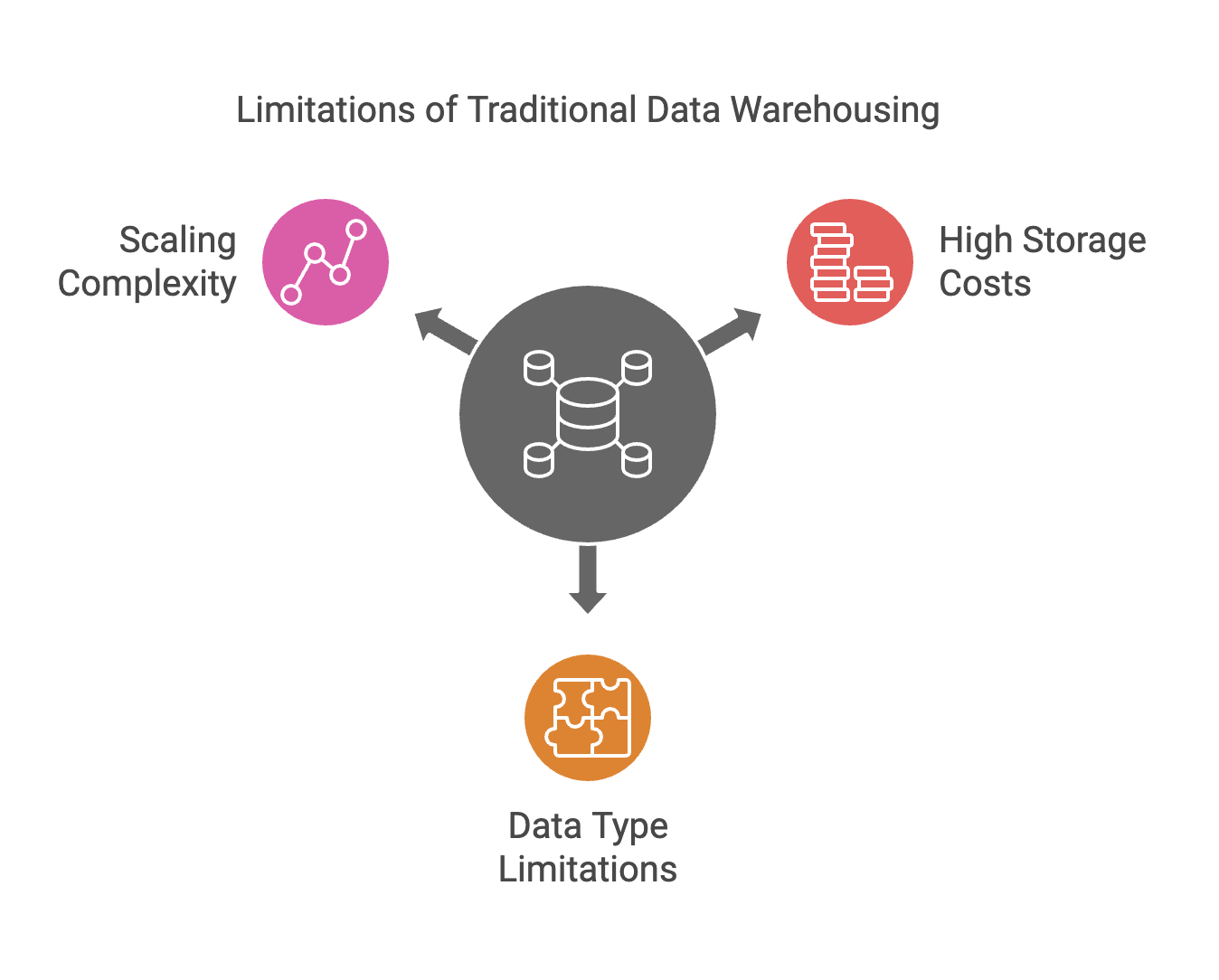

While data lakes addressed some warehouse limitations, they introduced their own challenges:
- Data Quality Issues: The lack of schema enforcement and transaction support led to data quality problems and the creation of "data swamps."
- Performance Limitations: Without optimized storage formats and query engines, data lakes often struggled to deliver the performance required for interactive analytics.
- Governance Challenges: Early data lakes lacked robust governance capabilities, making it difficult to implement enterprise-grade security and compliance controls.
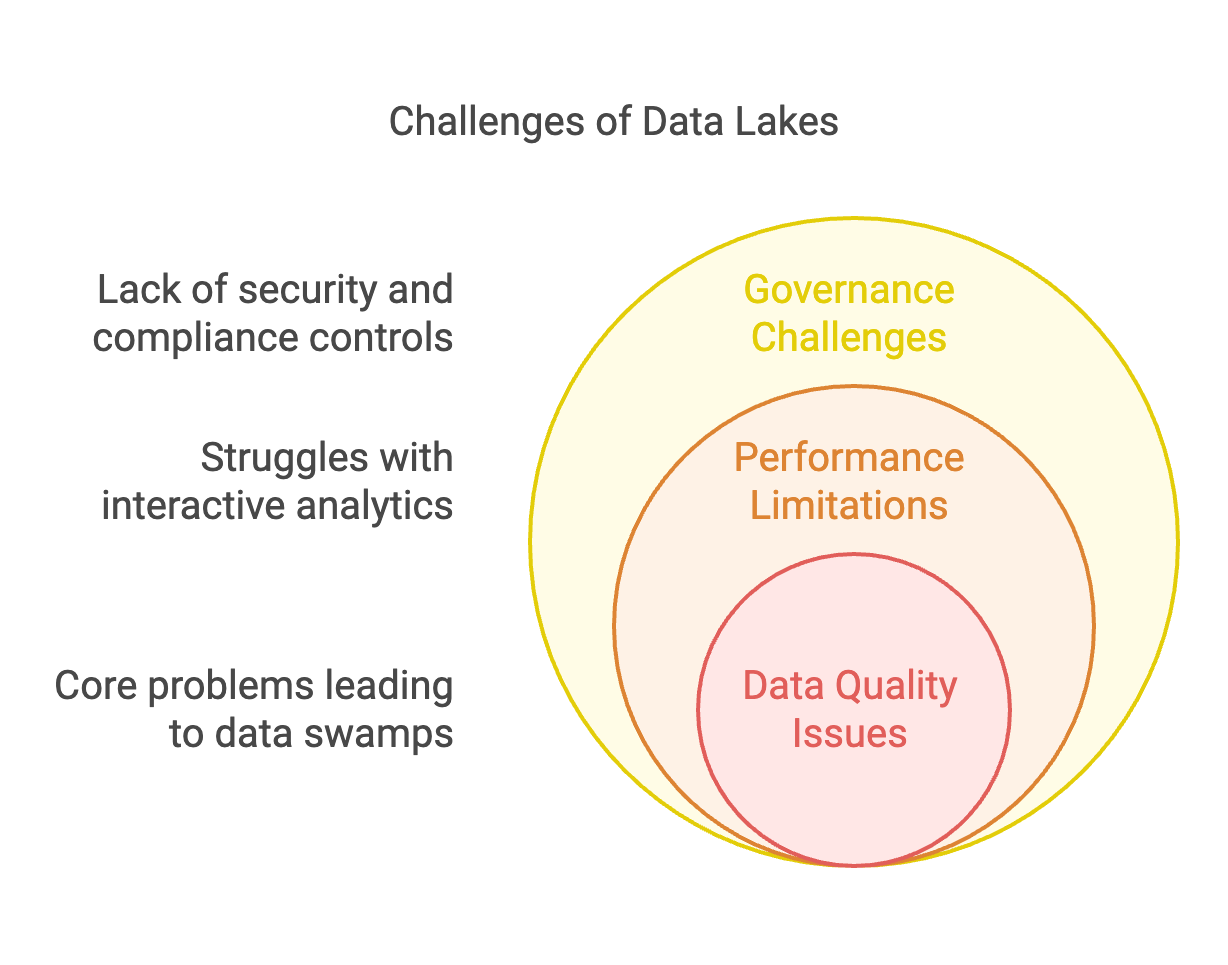

The Rise of Data Lakehouses
The data lakehouse represents a transformative advancement in enterprise data architecture, combining the flexibility and scalability of data lakes with the performance and reliability of traditional data warehouses. This architectural paradigm emerged in response to growing enterprise needs for a unified platform that can handle diverse data types and workloads while maintaining strict governance and performance standards.
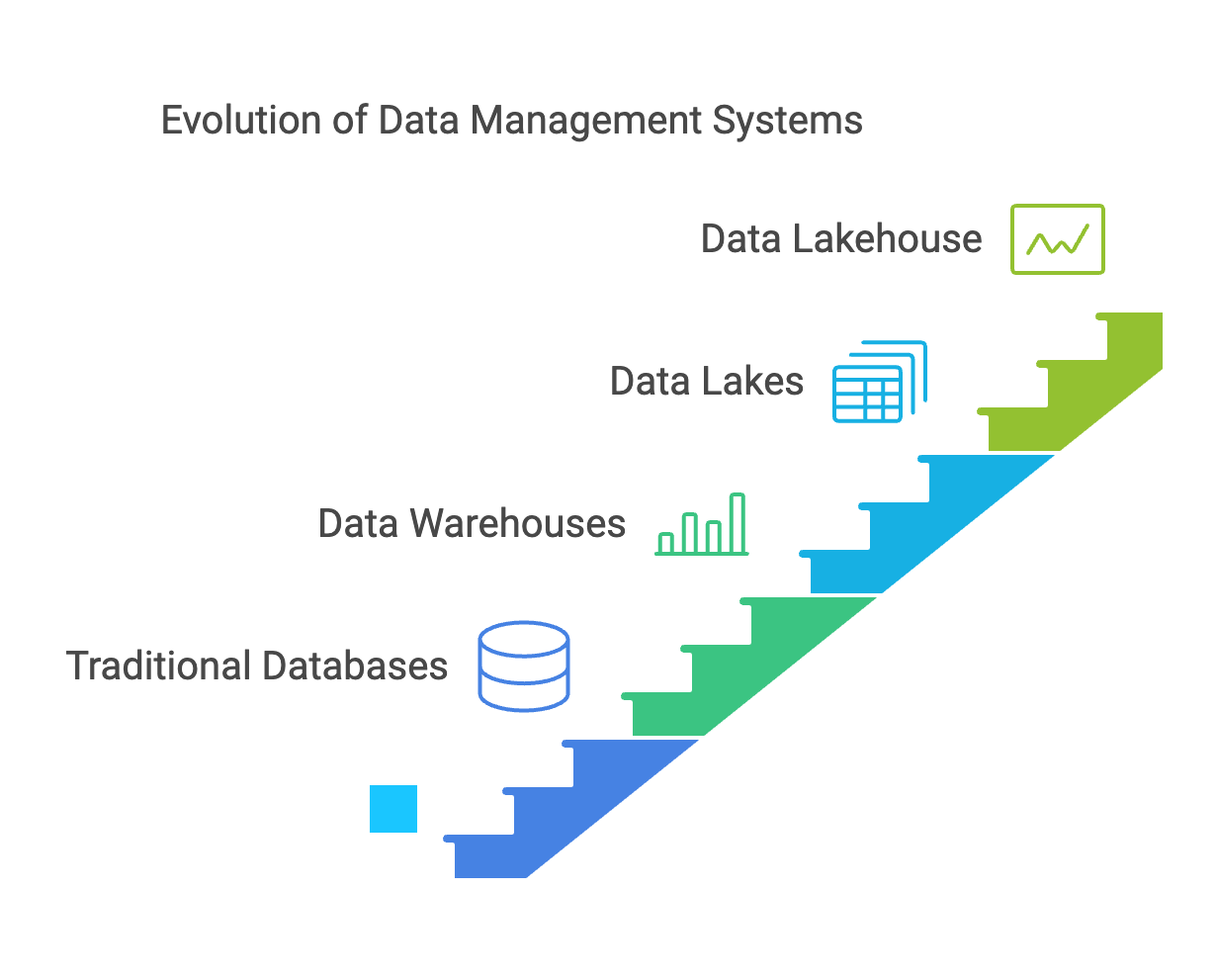

Understanding Data Lakehouses
A data lakehouse is an architectural pattern that creates a best-of-both-worlds solution for enterprise data management. It implements a data lake as the primary storage layer while adding a transactional metadata layer and performance optimizations that traditionally belonged to data warehouses. This architecture enables organizations to store all their data in a single platform while supporting diverse workloads ranging from business intelligence to machine learning.
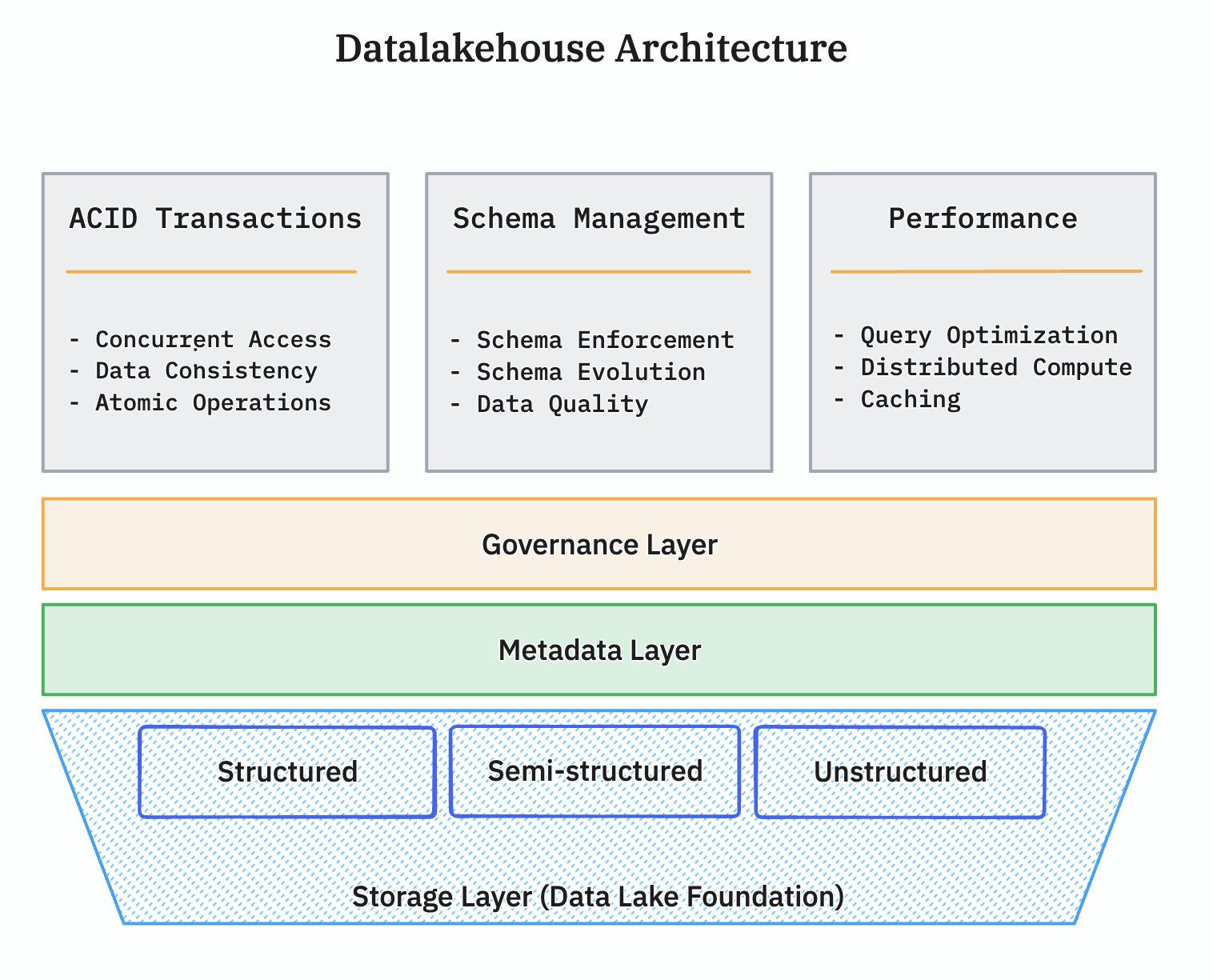

Unified Data Management
The data lakehouse eliminates the traditional separation between data lakes and data warehouses. It provides a single platform for storing and processing all enterprise data, whether structured, semi-structured, or unstructured. This unified approach significantly reduces data movement, improves consistency, and simplifies the overall data architecture.
ACID Transaction Support
Modern data lakehouses implement transactional guarantees through table formats like Apache Iceberg, which IOMETE uses as its foundation. These formats ensure data consistency and reliability while enabling concurrent reads and writes at scale. This capability brings warehouse-grade reliability to lake-based architectures.
Schema Enforcement and Governance
Unlike traditional data lakes, data lakehouses enforce schema on write while maintaining schema evolution capabilities. This approach ensures data quality without sacrificing flexibility. The platform implements comprehensive governance controls, including column-level security, audit logging, and lineage tracking.
Performance Optimization
Data lakehouses incorporate sophisticated performance optimizations, including caching, indexing, and query optimization. These features deliver performance comparable to traditional data warehouses while maintaining the cost advantages of data lake storage.
The Future of Enterprise Data Architecture
The data lakehouse represents more than just a technological evolution – it's a fundamental rethinking of how enterprises manage and extract value from their data. As organizations continue to gather more data and deploy more sophisticated analytics and AI workloads, the unified approach of the data lakehouse becomes increasingly crucial.
IOMETE's implementation of the data lakehouse architecture provides enterprises with a clear path forward, enabling them to modernize their data infrastructure while maintaining the control and flexibility they require. This combination of modern architecture and enterprise capabilities positions organizations to build data platforms that will support their needs both today and in the future.
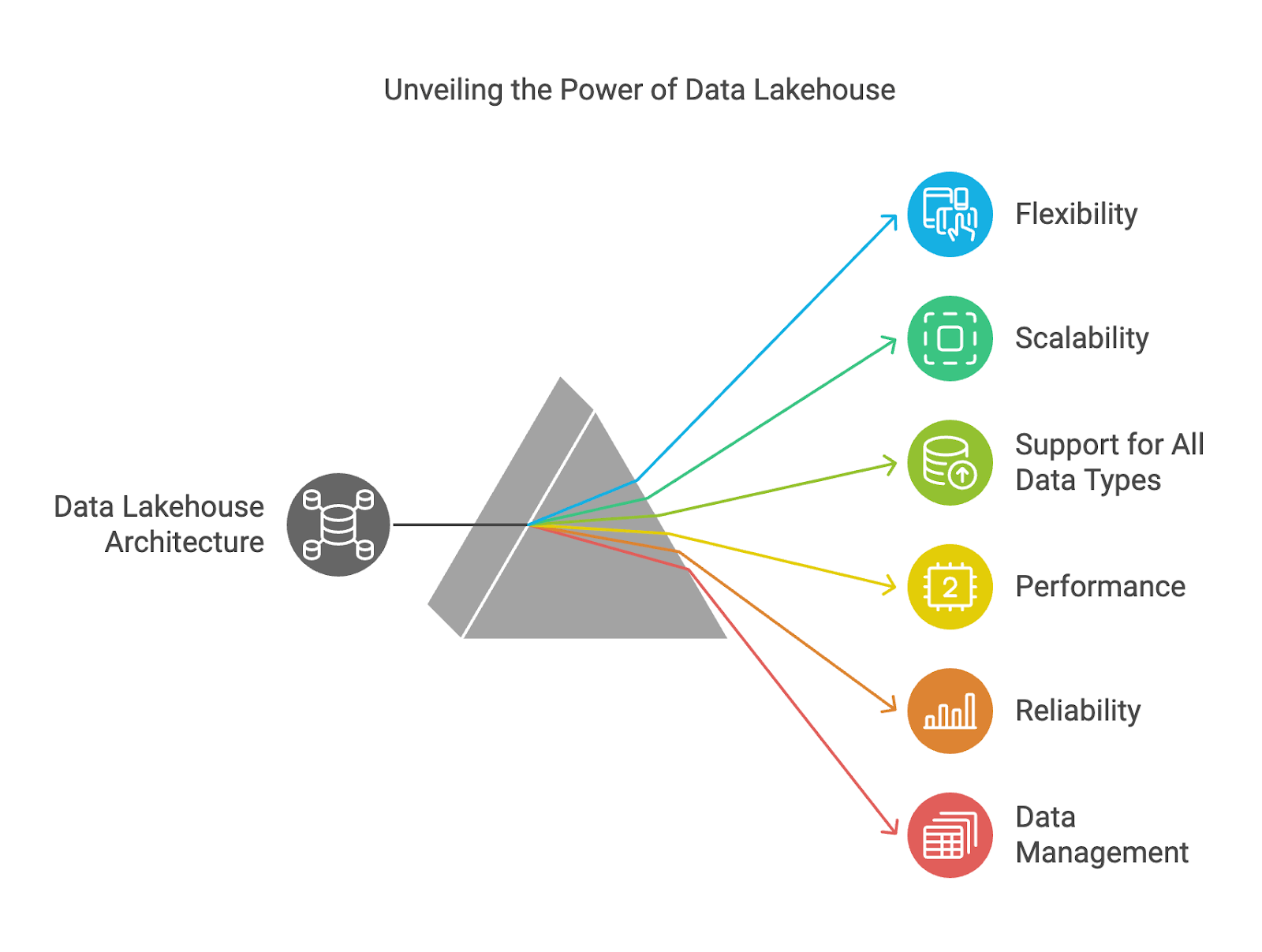

IOMETE - Data Lakehouse Platform
IOMETE represents a fundamental shift in how enterprises can approach their data infrastructure needs. As a self-hosted platform, it uniquely combines the advanced capabilities of modern data lakehouses with the control and flexibility that large organizations require. This approach enables enterprises to maintain complete sovereignty over their data infrastructure while leveraging cutting-edge data management capabilities.
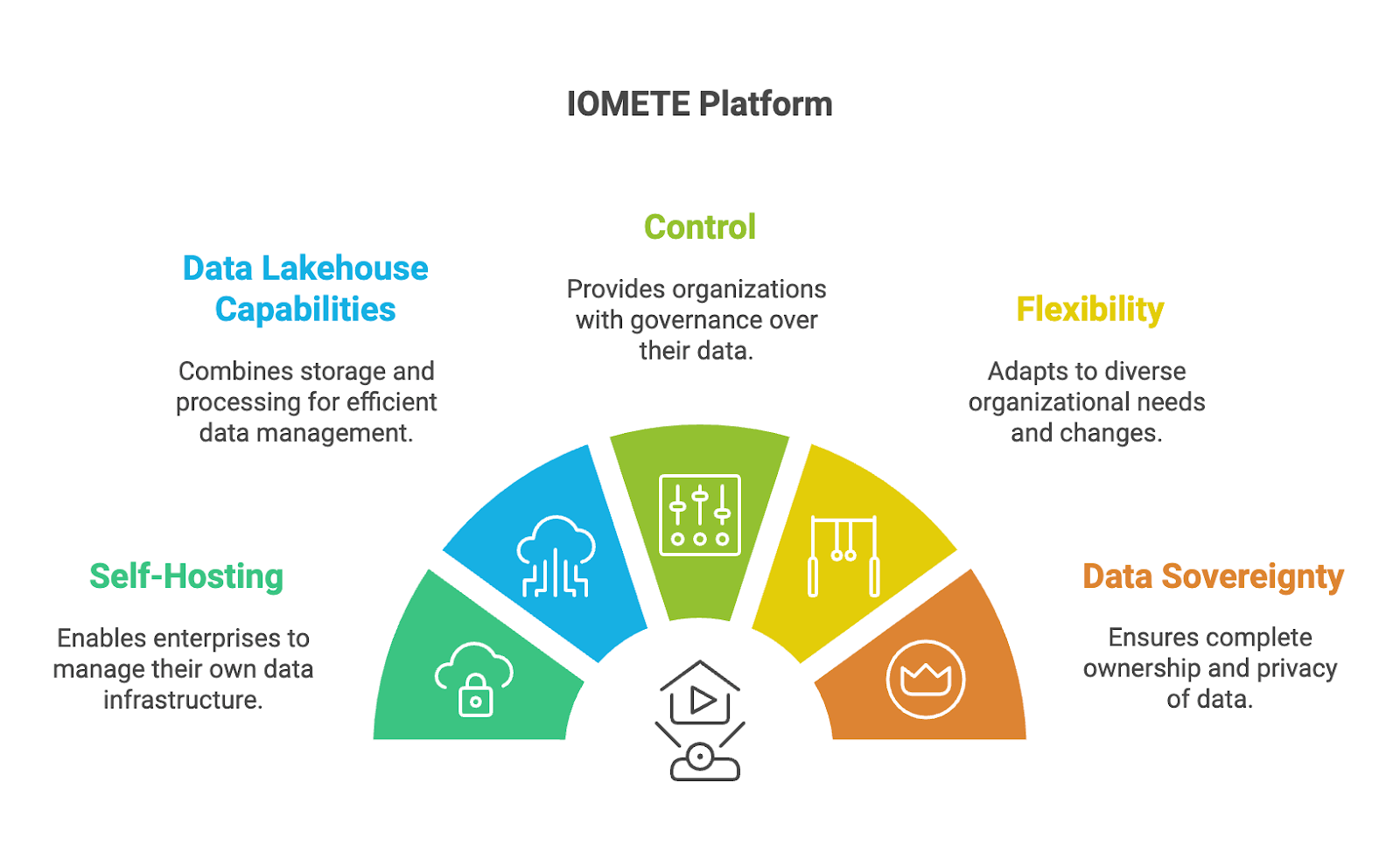

Unmatched Scalability
IOMETE's architecture is designed for enterprise-scale operations, capable of handling petabytes of data while maintaining consistent performance. The platform achieves this through a modern, cloud-native architecture built on Kubernetes, enabling true elastic scaling of resources.
The scalability framework operates across multiple dimensions. Horizontal scaling allows organizations to add processing capacity as needed, while vertical scaling enables efficient handling of complex workloads. The platform's multi-cluster architecture supports geographical distribution of workloads, enabling global operations while maintaining local performance.
Performance optimization in IOMETE occurs at multiple levels. The query engine implements sophisticated optimization techniques, including cost-based optimization and dynamic resource allocation. The storage layer utilizes advanced formats like Apache Iceberg, enabling efficient data access and management at scale.
Enterprise-Grade Security and Privacy
Security in IOMETE goes beyond basic access controls to provide a comprehensive security framework designed for enterprise requirements. The platform's security architecture starts with its self-hosted nature, giving organizations complete control over their security perimeter and data sovereignty.
The security framework implements multiple layers of protection. At the infrastructure level, IOMETE integrates with existing enterprise security systems and protocols, ensuring consistent security policies across the organization. The platform supports sophisticated authentication mechanisms, including integration with enterprise identity providers and single sign-on systems.
Data protection in IOMETE extends from storage through processing. The platform implements end-to-end encryption, with data encrypted both at rest and in transit. Organizations maintain control of their encryption keys, ensuring that sensitive data remains protected according to their security requirements.
Access control in IOMETE operates at multiple levels. The platform supports role-based access control (RBAC) at the system level and extends this to fine-grained access control at the data level. Organizations can implement column-level security, row-level filtering, and dynamic data masking to ensure users only access the data they need for their roles. Additionally, IOMETE's tag-based access control enables organizations to create dynamic access policies, significantly reducing the number of individual policies needed while improving scalability and efficiency of access management. This tag-based approach allows enterprises to maintain robust security controls even as their data infrastructure grows.
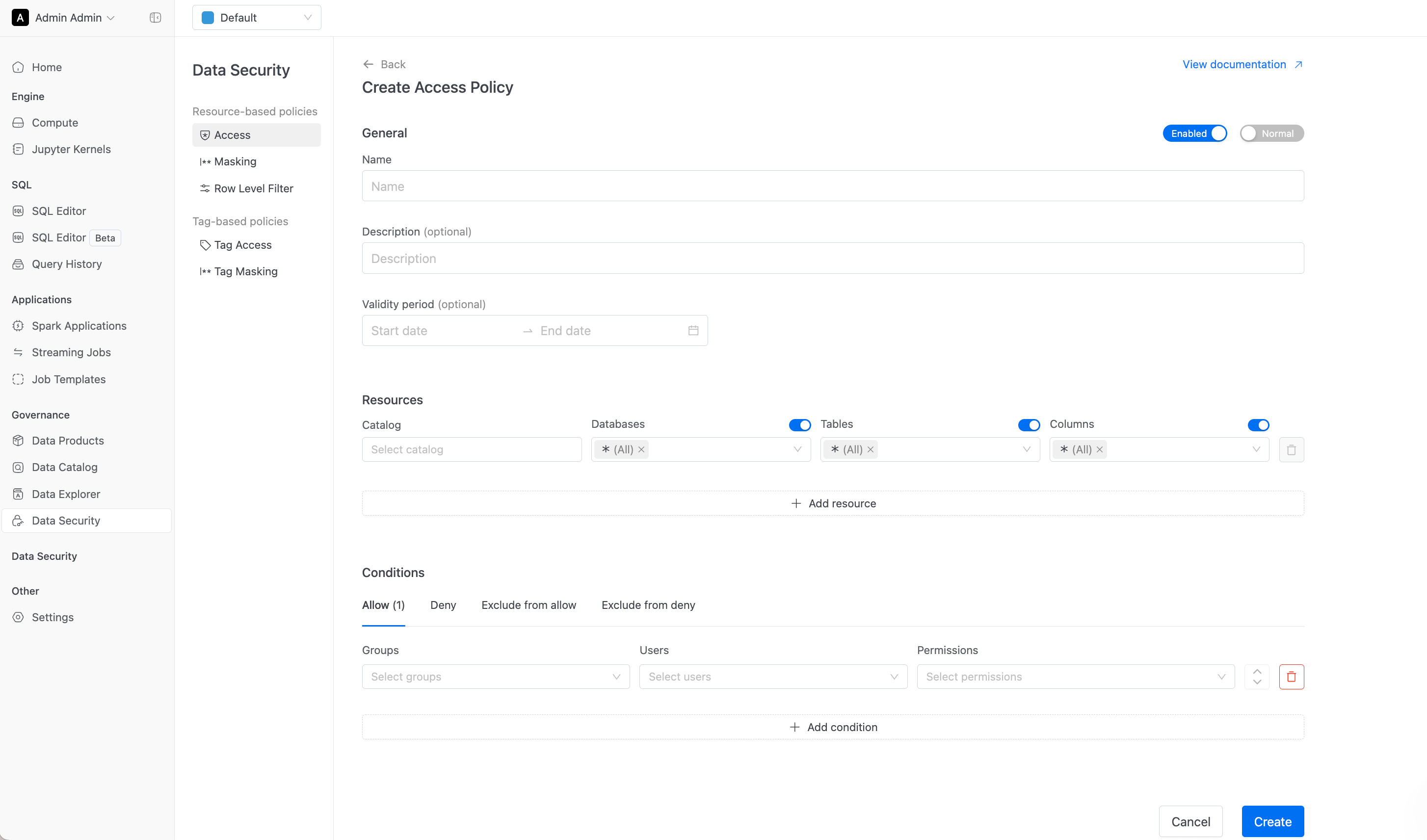

Maximum Cost Efficiency
IOMETE's approach to cost efficiency adapts to different deployment models, providing unique cost advantages for both on-premises and cloud environments.
For on-premises deployments:
- Maximizes existing infrastructure investments and data center resources
- Eliminates ongoing cloud operational costs and data transfer fees
- Leverages existing enterprise hardware and software licenses
- Optimizes resource utilization through workload consolidation
- Reduces total cost of ownership by maintaining control of infrastructure lifecycle
For cloud and hybrid deployments:
- Direct utilization of cloud provider discounts (30-50% savings)
- Support for spot instance usage (3-4x cost reduction for suitable workloads)
- Integration with reserved capacity planning
- Optimization of data transfer costs between environments
Across all deployment models, IOMETE's architecture enables efficient resource utilization through automated scaling and workload isolation. Organizations can implement different service levels for different workloads, ensuring critical operations receive necessary resources while optimizing costs for less time-sensitive tasks. The platform's flexibility allows enterprises to choose the most cost-effective deployment model for their specific needs while maintaining consistent management and capabilities.
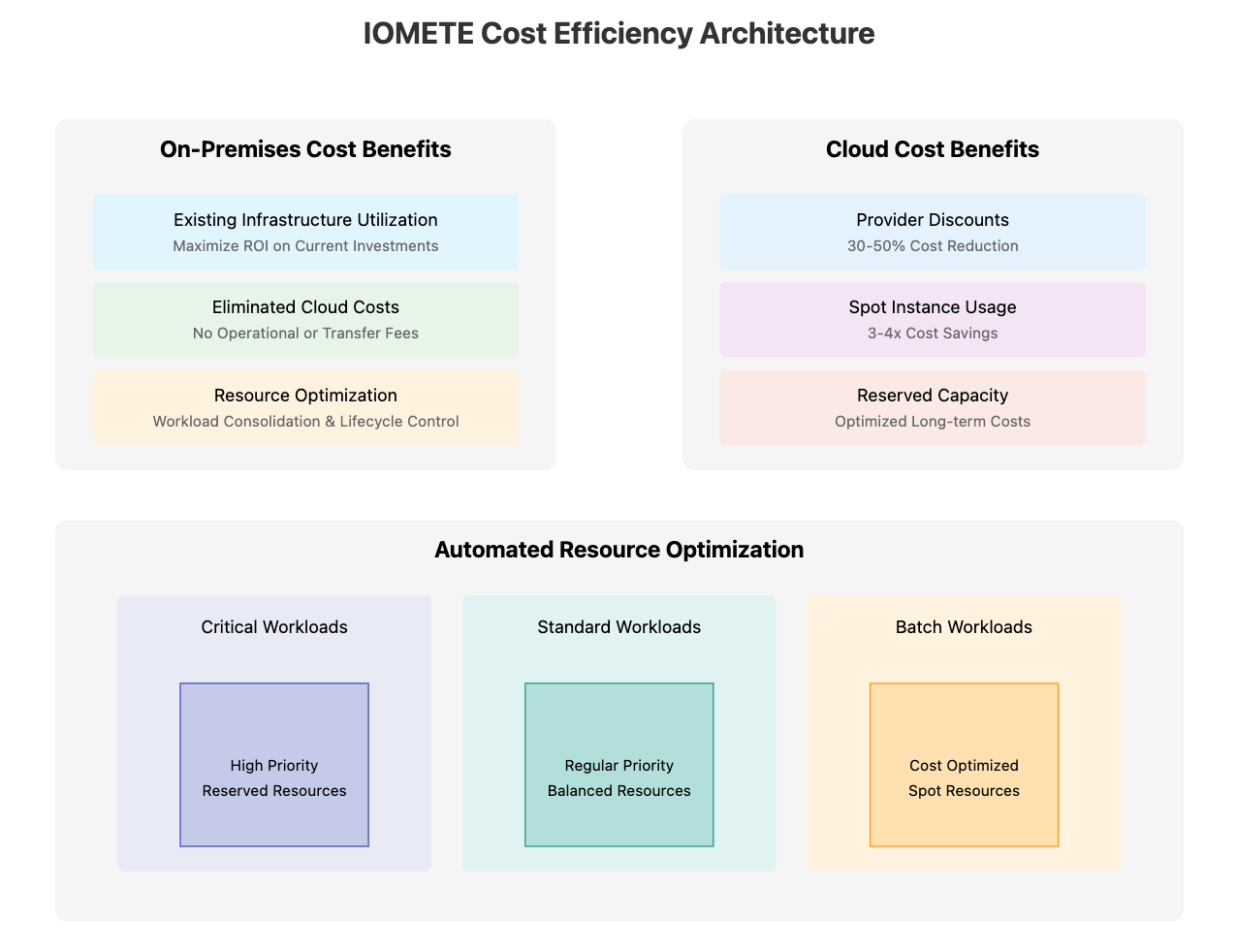

Simplified Deployment and Management
Despite its sophisticated capabilities, IOMETE maintains operational simplicity through a carefully designed deployment and management framework. The platform's Kubernetes-native architecture enables consistent deployment across different environments, from on-premises data centers to any cloud provider.
Management operations in IOMETE are streamlined through a unified control plane. This provides centralized visibility and control across all deployed components, regardless of their physical location. The platform implements automated health monitoring and proactive maintenance capabilities, reducing operational overhead.
Building for Enterprise Success
IOMETE's design philosophy centers on enabling enterprise success through a combination of advanced capabilities and operational practicality. The platform provides the sophisticated features that modern data operations require while maintaining the control and flexibility that enterprises need.
This approach enables organizations to build modern data infrastructure without compromising on their enterprise requirements. Whether deployed on-premises, in the cloud, or in hybrid configurations, IOMETE provides a consistent, enterprise-grade platform for managing and extracting value from organizational data.
The platform's future-ready architecture ensures organizations can evolve their data infrastructure as needs change. Whether adding new data sources, implementing new analytics capabilities, or expanding to new regions, IOMETE provides a foundation that grows with the organization's needs while maintaining enterprise-grade security, performance, and control.